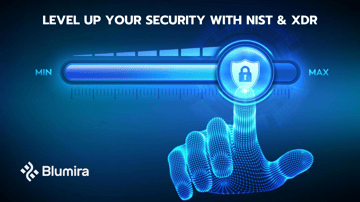Small businesses face cybersecurity challenges just like large enterprises do. Attack surfaces keep growing. New threats constantly emerge. And there’s never enough time or people to make security the priority it needs to be. For small to midsize businesses (SMBs) with limited resources, this is often the biggest challenge of all.
Extended detection and response (XDR) solutions promise to simplify security monitoring and incident remediation. Small teams need all the help they can get, so that promise is tempting. However, not every XDR vendor is a good fit for SMBs.
Let’s take a look at why more security teams are turning to XDR and how small businesses can find the right XDR solution.
What is XDR?
Explaining that XDR stands for “extended detection and response” is more straightforward than defining what, exactly, XDR is. Analysts and vendors will offer different descriptions of the ideal XDR solution. However, it’s safe to say that XDR solutions share these three themes:
- Combines multiple tools and systems
- Goal is to improve threat detection and incident response
- Requires automation and AI or machine learning
Implementations of these themes vary from vendor to vendor. Yet the ultimate purpose of XDR remains the same: simplifying security monitoring to strengthen cybersecurity resilience.
Why is XDR Important for Small Businesses?
Security breaches are inevitable. It’s not a question of if but when they will happen. Recent reports found 75% of American organizations with more than 1,000 employees experienced a security breach in the past year. Small and medium-sized businesses with fewer resources must face similar challenges. Here are four reasons why smaller organizations need help with their security monitoring programs.
Expanding attack surfaces. Cyberattacks can come from any direction, whether a brute force attack on network defenses or a phishing email targeting privileged users. Being prepared for these attacks requires expertise and constant vigilance — and smaller organizations often lack the necessary expertise and resources to properly defend themselves.
At the same time, work-from-home, bring-your-own-device (BYOD), the cloud, and other business trends push security perimeters far beyond the office to create new attack vectors.
Siloed security systems. The piecemeal way companies add new tools to address emerging threats creates security siloes. Some people focus on tools for managing user devices. Other people on network protection. Each tool requires learning its vendor’s approach to security and interface design.
As a result, there’s little synergy within an organization’s security systems. Network administrators may never know about an alert on a remote user’s laptop. In addition, the patchwork of security applications may leave unmonitored gaps that open paths for security breaches.
Alert volume and fatigue. This quilt of security applications quickly overwhelms busy IT staff with security alerts. No sooner have they resolved one incident than another demands their attention. Over time, alert fatigue makes people less responsive to the latest interruption.
What’s worse, unprioritized alerts result in potentially catastrophic first-in, first-out response strategies. As people chase down relatively minor issues, they may not notice the critical incident building in their systems.
Response complexity. Hackers know to cover their trails. They’ll let antivirus systems delete the malware that got them through perimeter defenses. Then they’ll use other tools to move laterally through the network.
Today’s disjointed approach to security monitoring makes interpreting separate alerts difficult. Endpoint monitoring will report the quickly-resolved malware incident, but will anyone link that to minor network monitoring alerts?
As cyberattacks become more sophisticated, businesses need more sophisticated detection and response solutions.
What Are The Benefits of XDR?
XDR solutions provide this sophisticated approach to incident detection and response. They promise to make security more manageable by consolidating everything into one system where new technology can simplify infrastructure visibility, improve threat detection, generate more effective responses, and make organizations more compliant.
Simplicity and visibility. By unifying multiple security tools in a single console, XDR solutions reduce the complexity of defending broad attack surfaces. Security staff use one system to monitor every endpoint and network. Visibility across the company simplifies day-to-day management and makes it easier to spot coverage gaps.
Improved threat detection. By becoming the central repository for all security alerts, XDR systems reduce the demands on your security team’s attention. These solutions use AI and machine learning to automatically evaluate possible incidents based on models of normal behavior. False positives become less common. Real threats get prioritized so people can focus on the most critical issues.
More effective incident response. AI and machine learning further reduce the burdens of incident responses. An XDR system will automatically resolve minor incidents based on predefined security policies. When it detects a higher-priority incident, the XDR system will gather and analyze evidence to help security teams deliver faster, more effective responses.
Improved compliance. Security frameworks like HIPAA or PCI DSS require organizations to have processes for logging, monitoring, and responding to security incidents. They also require the storage of incident logs to support security process improvement and independent auditing.
An XDR solution helps your compliance programs by unifying endpoint and network security monitoring to support rapid and effective incident responses.
Which XDR Features Should SMBs Look For?
Any XDR vendor you consider needs to be a good fit for your infrastructure, whether on-premises or in the cloud, as well as for how you do business. More importantly, the right solution should magnify your security capabilities to make your organization more resilient. These five criteria will help you evaluate potential XDR vendors.
An Open Platform
XDR solutions come in as many shapes and sizes as there are XDR vendors. Narrow your list to the vendors with solutions that best align with your business needs. A single vendor’s proprietary solution offers the convenience of getting XDR and other security applications in a single contract. You risk vendor lock-in at a higher price. On the other hand, you can count on the interoperability of the vendor’s security features.
An open solution may be more affordable for SMBs. In addition, you get to choose the best-in-class network monitoring, endpoint protection, and other applications that make the most sense for your business.
However, that flexibility must be balanced against the time and resources needed to integrate these applications with your XDR solution. That’s why it’s equally important that the XDR platform is easy to use; a solution that requires a third-party consultant or weeks of training to use it effectively is too resource-intensive to be helpful for smaller teams.
Native and third-party coverage
Many vendors developed their XDR solutions as extensions to existing products. Some started in the EDR space, others focused on network security, and others as SIEM providers.
Given their different origins, be sure to evaluate how much of your attack surface potential XDR vendors cover natively. Does it include endpoint monitoring and protection? Will it monitor your networks? And what about your cloud-based resources?
Review an XDR vendor’s third-party integrations to make sure you can monitor your entire infrastructure.
Compatibility
Evaluate how well an XDR vendor’s implementation aligns with your endpoint population. Is your company a Windows house, or do you need support for Mac and Linux? How do the vendor’s provisioning processes accommodate your BYOD policies?
Do the same for your networks. Will the XDR solution monitor your on-premises controls? What about your cloud environments?
Detection and response capabilities
To make the most of XDR, assess candidate solutions for how they automate incident detection and response. Can AI and machine learning features reduce the volume of alerts? Can you set rules to prioritize incidents? How much of the analysis can the solution produce automatically?
Expertise
Just as important, consider how easy it will be for your team to deploy and manage an XDR solution. Cybersecurity is a rapidly evolving field that requires constant vigilance as new threats emerge. Even large enterprises with 24×7 security operations centers struggle to keep pace.
Smaller organizations can’t match those resources, so they need an XDR vendor that does more than ship a product. For example, proactive threat intelligence updates will keep your monitoring rules current. In addition, an XDR vendor’s experts can advise you during an incident response.
Ask vendors to describe their support options. How will they help create and refine your detection rules? Can you call on their security experts during an incident? Do they offer playbooks that let you automate incident responses?
Why Blumira’s XDR is a Perfect Match For SMBs
Blumira’s all-in-one open XDR platform is designed for small teams to easily use and manage. Our automated platform detects and immediately contains threats to reduce the burden on IT teams that can’t work around the clock.
Blumira does things differently by providing more value for better security outcomes, including:
- Flexibility of an open XDR: Open platform integrates with multiple vendors for hybrid coverage of cloud, endpoint, identity, servers and more
- Automation accelerates security: Deploy in minutes; stop threats immediately with automated response to isolate devices and block malicious traffic
- Satisfy more compliance controls: Get more in one – SIEM w/1 year of data retention, endpoint, automated response & 24/7 SecOps support*
- Managed platform saves time: Blumira’s team manages the platform to do threat hunting, data parsing and analysis, correlation and detection at scale
Want to see our XDR in action? Get a demo today.
Erica Mixon
Erica is an award-winning writer, editor and journalist with over ten years of experience in the digital publishing industry. She holds a Bachelor’s degree in writing, literature and publishing from Emerson College. Her foray into technology began at TechTarget, where she provided editorial coverage on a wide variety...
More from the blog
View All Posts
SMBs: Level Up Cybersecurity With NIST and XDR
Read More
XDR: Better Security Outcomes
Read More
SIEM vs XDR vs SOAR vs SOC vs EDR vs MDR
Read MoreSubscribe to email updates
Stay up-to-date on what's happening at this blog and get additional content about the benefits of subscribing.
